Fantasia 2018, Day 10, Part 2: Born of Woman 2018
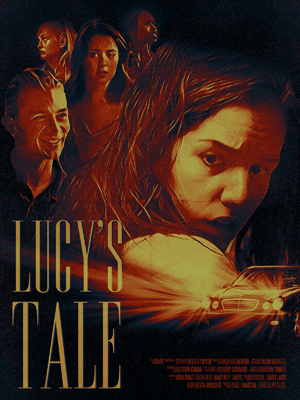 The third and last screening I saw on Saturday, July 21, was a selection of short films: the 2018 Born of Woman Showcase, presenting short genre works by women filmmakers. This year saw nine movies from eight countries.
The third and last screening I saw on Saturday, July 21, was a selection of short films: the 2018 Born of Woman Showcase, presenting short genre works by women filmmakers. This year saw nine movies from eight countries.
First was “The Gaze,” from the United States, directed, written, and produced by Ida Joglar. Mayra (Siri Miller) is a young scientist who seems to be on the edge of manifesting psychic powers. Then her boss, an older and far more renowned scientist (Drew Moore), makes an improper advance; we don’t see exactly what happens, and when Mayra tries to explain it to her friend Jenny (Jennifer Rostami) later, Jenny minimises what she has to say. But later he makes an unambiguous assault on Mayra, leading to a manifestation of power and a lengthy final shot as the credits roll that can be read as either comedy or horror. Or, perhaps, both. The film’s well-shot, particularly a sequence in which Mayra tests her apparent powers with a pencil and a glass of milk, and Miller in particular is very good. It’s not especially subtle, but some things are best not handled subtly.
France’s “Petite Avarie,” directed by Manon Alirol and Léo Hardt, written by Hardt, was next. It begins with a woman (Manda Touré) coming home to her boyfriend (Hardt). She’s just been diagnosed with breast cancer. His response is to break up with her in a lengthy monologue, because it’s going to be too hard on him to stay with her. He leaves the apartment, goes to a nearby bar, and there she catches up with him and lashes back, verbally and physically. This leads to a kind of reconciliation. It all works from the sheer absurdity and cruelty of the dialogue; Hardt delivers his self-pitying speech blandly, like some sort of psychopath. When Touré’s character catches up with him, though, we find out she’s every bit as terrible a human being as he is. The writing here is stunning in its crudity and cleverness, and it’s delivered with an outrageous precision. It’s strong stuff, such that some won’t be able to see the humour in it, but it works.
“Lucy’s Tale,” from the United States, was next. Written and directed by Chelsea Lupkin, it follows a bullied teenager who’s trying to negotiate high school and develop a romantic life — while she’s also developing a tail. Irina Bravo gets across Lucy’s desperation, anger, and the unpredictable surges of emotion she has to deal with. The movie looks nice, often dark, always ominous. It’s about growing up, but growing into something nobody expects. What is Lucy at the end? I’m not sure, and I’m not sure it’s important to be sure. Whatever she is, that’s what she’s become.
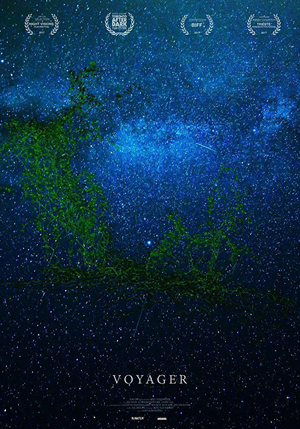 Writer-director Jiwon Moon, from South Korea, followed with “Nose Nose Nose EYES!” It’s a startling horror film centering around a little girl whose mother is making a terrible use of her husband, the girl’s father (the actors are listed as Kim Jayeong, Oh Jeongse, and Juyeong Lee, but I can’t find a reference for who plays who). It’s a chilling suspense movie that makes strong use of good camerawork and tight scripting to bring out maximum tension. The pacing’s utterly perfect in the way it works with tension, and some POV shots are almost unendurable in the best way.
Writer-director Jiwon Moon, from South Korea, followed with “Nose Nose Nose EYES!” It’s a startling horror film centering around a little girl whose mother is making a terrible use of her husband, the girl’s father (the actors are listed as Kim Jayeong, Oh Jeongse, and Juyeong Lee, but I can’t find a reference for who plays who). It’s a chilling suspense movie that makes strong use of good camerawork and tight scripting to bring out maximum tension. The pacing’s utterly perfect in the way it works with tension, and some POV shots are almost unendurable in the best way.
Norway’s “Voyager” was next. Written and directed by Kjersti Helen Rasmussen, it’s set at the seed vault at the Arctic island of Svalbard — where a very unusual alien invasion takes place. It’s slow, atmospheric, and engagingly surreal. Dialogue’s minimal, but a few powerful images are really enough to make this film memorable, as the sense of impending doom grows through its 8-minute running time. It’s a movie that works with shadows and implication, as well as a sense of suspense like something out of one of the better episodes of The X-Files.
“Catcalls,” from Ireland, was written and directed by Kate Dolan. A man (Martin O’Sullivan) flashes two young women (Edel Murphy and Cesca Saunders), but later that night finds that they are not what they appeared. The title here does not necessarily mean what it appears to, and the unstated but clear implication that we’re watching a game of something like cat-and-mouse works — indeed, the unvoiced question ‘are you a man or are you a mouse’ has rarely been so pointed. This is a fairly simple revenge story, if well-shot, and with surprising emotional range from O’Sullivan’s perpetrator-and-sufferer-of-vengeance. But it’s also only 9 minutes, and that feels right; enough’s left unstated or implied that it keeps a certain atmosphere.
Hanna Bergholm (of Finland) wrote and directed “Puppet Master,” perhaps the most purely beautiful film of the showcase. A woman (Merja Pöyhönen) allows a man (Jari Virman) to transform her into a literal puppet; but the story goes on, and they exchange roles in intriguing ways. The puppets here steal the show, dancing in a darkened black-box set. There is no dialogue, and I found that while the story was clear enough in terms of plot, it could be interpreted a number of ways, particularly the end in which the woman becomes not just a master but a maker. The film has the feel and resonance of a fairy tale, as though the puppet master and the woman are an evil enchanter and a princess; this is an archetypal story played out in a puppet-theatre. The lighting was wonderful, emphasising a heightened, unreal, spun-sugar feel.
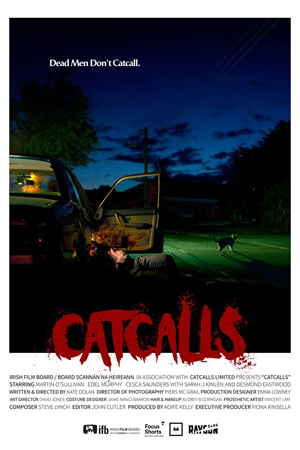 “Who’s Who in Mycology,” an American-Czech coproduction from Marie Dvorakova, was a good change of pace. The only real comedy in the block, it follows a trombone player (Joel Brady) who brings a drunk woman (Johana Schmidtmajerova) back to her apartment. He tries to open a bottle of wine, and this leads to a strange hallucinatory series of events in the old book-lined room. Volumes of “Who’s Who In Mycology” tumble off the shelves, opening to random pages as they fall, revealing Victorian gentlemen with baffling facial hair who argue with themselves and the trombone player. Meanwhile, mushrooms are emerging everywhere. This is a delightful screwball comedy not unlike Terry Gilliam mixed up with Jeff VanderMeer; the Fantasia program notes that Dvorakova’s a fan of Jeunet, which also makes sense. The colours are spectacular, the design of the setting and props wonderful, and the action utterly unpredictable. It builds in an off-kilter but compelling way, and finds a strong resolution. There’s a sense of logic here that’s unique, and that builds both a world and a worldview.
“Who’s Who in Mycology,” an American-Czech coproduction from Marie Dvorakova, was a good change of pace. The only real comedy in the block, it follows a trombone player (Joel Brady) who brings a drunk woman (Johana Schmidtmajerova) back to her apartment. He tries to open a bottle of wine, and this leads to a strange hallucinatory series of events in the old book-lined room. Volumes of “Who’s Who In Mycology” tumble off the shelves, opening to random pages as they fall, revealing Victorian gentlemen with baffling facial hair who argue with themselves and the trombone player. Meanwhile, mushrooms are emerging everywhere. This is a delightful screwball comedy not unlike Terry Gilliam mixed up with Jeff VanderMeer; the Fantasia program notes that Dvorakova’s a fan of Jeunet, which also makes sense. The colours are spectacular, the design of the setting and props wonderful, and the action utterly unpredictable. It builds in an off-kilter but compelling way, and finds a strong resolution. There’s a sense of logic here that’s unique, and that builds both a world and a worldview.
Finally, “The Old Woman Who Hid Her Fear Under The Stairs,” from UK writer-director Faye Jackson, follows an elderly lady (Sara Kestelman) who learns a useful trick from the internet: how to physically remove fear from herself. She grows less tense almost immediately, and finds more joy in life, but do we need fear to be able to fully understand the world? It’s a film that goes in some very surprising directions. It’s always well-shot, though, balancing dark and menacing shadows with the warm light of the old woman’s home. Kestelman’s acting is very strong, bringing home the theme of this film — fear, and how to cope to with it.
A question-and-answer session followed with Ida Joglar (“The Gaze”), Léo Hardt (“Petite Avarie”), Chelsea Lupkin (“Lucy’s Tale”), and Hanna Bergholm (“Puppet Master”). As always, what follows comes from my scribbled notes and may contain errors. The first question, for all the directors, was why they chose to make the film they did. Joglar said “The Gaze” started with a conversation and was based on something that actually happened to someone, as well as a bit of her own experience. She wanted to start a conversation when she began the film, and although that conversation was now ubiquitous thanks to the #MeToo movement, she thought it was important to keep it going. Hardt said that his girlfriend had done a project on women who’d gone through breast cancer, and had found there were a lot of break-ups around it. He started writing the film based on that, and worked with his co-director Manon Alirol to turn it into a comedy.
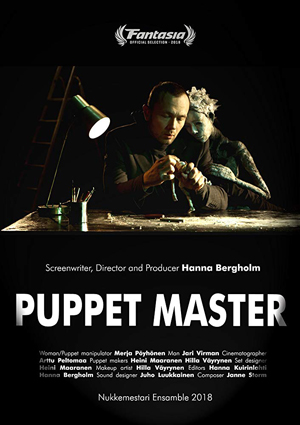 Chelsea Lupkin said she’d wanted to explore puberty and fear in “Lucy’s Tale” — not just supernatural fears, but basic fears such as the fear of someone who doesn’t look like you. She noted it serves as an origin story for Lucy, and pointed out an homage to Carrie. Bergholm said her film actually began as a feature film about a relationship; she got some grants for it, but not the funding needed to make a feature, and so she decided to develop her idea as a short, as she admired the work that went into modern puppets.
Chelsea Lupkin said she’d wanted to explore puberty and fear in “Lucy’s Tale” — not just supernatural fears, but basic fears such as the fear of someone who doesn’t look like you. She noted it serves as an origin story for Lucy, and pointed out an homage to Carrie. Bergholm said her film actually began as a feature film about a relationship; she got some grants for it, but not the funding needed to make a feature, and so she decided to develop her idea as a short, as she admired the work that went into modern puppets.
A questioner from the audience noted there was a heartbreaking feel to “Puppet Master” (which the questioner said reminded them of a King Diamond song). Asked if it was intended to be so eerie and heartbreaking, Bergholm said yes, and it was nice to hear that reaction. She’d wanted to make the film without dialogue to emphasise the feel of a dance, and that the storytelling of the film was like a dance. As a child, she observed, you loved a puppet like you loved yourself, a kind of perfect relationship.
Another questioner observed that “Lucy’s Tale” reminded them of Ginger Snaps, to which Lupkin observed that the film had a lot of influences in it, particularly in terms of body horror. She noted that Lucy was not necessarily a bad person, but wasn’t necessarily a good person either. Asked if she thought Lucy had gone to far, she said that no one was really in control by the end of the film; she analysed Lucy’s motivation at the conclusion, noting that Lucy had realised that something dangerous could happen if she made a certain choice, but made it anyway.
The directors were asked whether they’d like to turn their short work into features; Joglar said she’d always been interested in doing a feature based on “The Gaze,” as she didn’t feel she’d had the time to explore all the nuances she’d wanted. She also felt the title as it now stood was possibly confusing, and that a longer film could better explain turning around the male gaze. Hardt said that while he’d love to work on features, this film was intended as a short. He had meant at first to just have the movie be the break-up scene, but his co-creator Alirol insisted that it be even longer and go on to surprise the viewer even more.
Lupkin observed she was very interested, and in fact knows where a feature-length story would go, but that the current film is very much a short story. She’d had to develop specific craft solutions to create suspense and make her story on a budget. She spoke about bringing her star to a friend’s shop to have a mould made of her lower spine in order to make the tail; it wasn’t expensive, and most of the film was done with practical effects with only some digital cleaning up. Bergholm said she was developing a feature, but for this movie, a feature would have involved compromise while they could do what they wanted in the short.
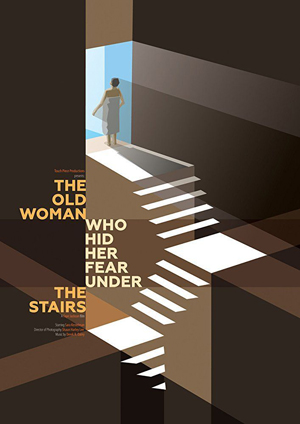 The directors were then asked about the process of funding their films. Joglar (if my notes are correct) noted that a company she does commercials with donated to the film, while lab scenes were shot guerrilla-style with permission from the scientist in charge. They also shot in a friend’s home and office. Hardt said there was a great system in France for funding shorts in every region; big hits filmed in France, like Dunkirk, had to give some money to making shorts. Beyond that, crowdfunding was needed. They were lucky also with the bar they used for a setting, which agreed to let them shoot there so long as they used it for the end-of-shoot party. It was a hard-rock bar, which they turned into a hipster bar in the space of an afternoon.
The directors were then asked about the process of funding their films. Joglar (if my notes are correct) noted that a company she does commercials with donated to the film, while lab scenes were shot guerrilla-style with permission from the scientist in charge. They also shot in a friend’s home and office. Hardt said there was a great system in France for funding shorts in every region; big hits filmed in France, like Dunkirk, had to give some money to making shorts. Beyond that, crowdfunding was needed. They were lucky also with the bar they used for a setting, which agreed to let them shoot there so long as they used it for the end-of-shoot party. It was a hard-rock bar, which they turned into a hipster bar in the space of an afternoon.
Lupkin said she worked in New York on various projects, and saved money with which to make the movie. She planned to shoot it in three days, but hadn’t fully planned for make-up application, which led to 19-hour working days. People provided some services gratis, such as the director of photography who brought their own camera. “If it’s the right project, maybe people are willing to help you out,” she observed. Bergholm told a similar story; she’d had a grant for making the puppets, but through friends got access to a studio to shoot in, lights, and a camera — and her friends helped out in exchange for food.
That ended the questions, and my day at Fantasia. I was not at that point sure what my schedule would hold for the next day, not exactly. But however it would end up, I knew there was a lot waiting for me.
Find the rest of my Fantasia coverage here!
Matthew David Surridge is the author of “The Word of Azrael,” from Black Gate 14. You can buy his first collection of essays, looking at some fantasy novels of the twenty-first century, here. His second collection, looking at some fantasy from the twentieth century, is here. You can find him on Facebook, or follow his Twitter account, Fell_Gard.